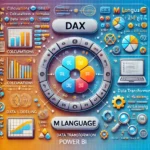Software testing is an integral part of the development process, ensuring that the final product meets quality standards and satisfies customer requirements. In the world of project management, two popular methodologies, Agile and Waterfall, have distinct approaches to testing. Each methodology has its strengths and weaknesses when it comes to testing practices. In this blog post, we will delve into the nuances of Agile vs.Waterfall testing, exploring their characteristics, advantages, and drawbacks, to help you determine the most suitable approach for your testing needs.
Waterfall Testing: A Sequential and Comprehensive Approach
Waterfall testing follows the traditional and linear nature of the Waterfall development methodology. Testing occurs at the end of each phase, following a sequential order from requirements analysis to design, implementation, testing, deployment, and maintenance. Testers receive comprehensive documentation at each stage, making it easier to trace test cases back to the original requirements.
https://synapsefabric.com/2023/07/22/agile-vs-waterfall-testing-a-comprehensive-comparison/
Advantages of Waterfall Testing
- Clear and well-defined test scenarios due to detailed requirements documentation.
- Testing occurs in a controlled environment, minimizing disruptions during development.
- Suitable for projects with stable and fixed requirements.
Drawbacks of Waterfall Testing
- Limited adaptability to changes, potentially leading to late detection of defects.
- High risk of undetected issues, especially if the requirements are misunderstood or misinterpreted.
- Customer feedback is challenging to incorporate once testing begins.
Agile Testing: An Iterative and Collaborative Approach
Agile testing aligns with the iterative and incremental development process of Agile methodologies. Testing is an ongoing activity throughout each sprint, ensuring that the software is continuously evaluated and improved. Testers collaborate closely with developers and product owners to validate user stories and adjust testing priorities based on changing requirements.
Advantages of Agile Testing
- Frequent testing allows for rapid feedback and quick defect detection.
- High adaptability to changing requirements, ensuring that customer needs are continuously met.
- Early and continuous customer involvement improves product alignment with expectations.
https://synapsefabric.com/2023/09/04/java-vs-python-the-battle-for-automation-testing-supremacy/
Drawbacks of Agile Testing
- Requires active collaboration and communication between testers, developers, and stakeholders.
- May not be suitable for large, complex projects due to the constant testing effort.
- Limited documentation compared to the comprehensive documentation in Waterfall.
Agile vs. Waterfall Testing: Key Differences
Timing of Testing
- Waterfall: Testing occurs at the end of each phase.
- Agile: Testing is continuous throughout the development process.
Requirements Adaptability
- Waterfall: Less adaptable to changes in requirements.
- Agile: Highly adaptable, with a focus on responding to changing customer needs.
Customer Involvement
- Waterfall: Limited customer involvement during testing.
- Agile: Continuous customer feedback is encouraged throughout the testing process.
Choosing the appropriate testing approach between Agile and Waterfall depends on the nature of the project and the testing requirements. Waterfall testing provides comprehensive documentation and control but may lead to late defect detection and less adaptability to changes. In contrast, Agile testing offers rapid feedback, adaptability, and customer involvement but requires active collaboration and may be challenging to manage in larger projects.
By understanding the differences and considering your project’s specific needs, you can tailor your testing approach to maximize efficiency, improve product quality, and meet customer expectations effectively.






